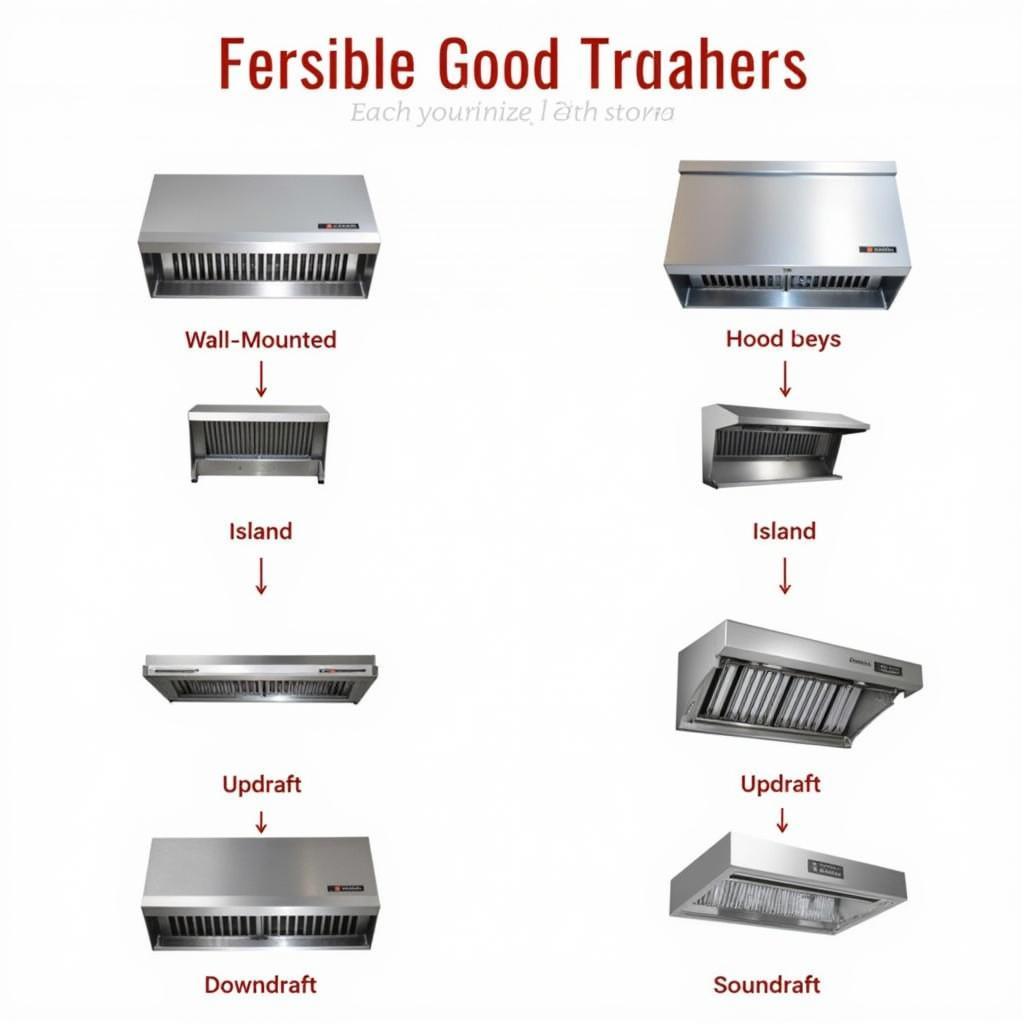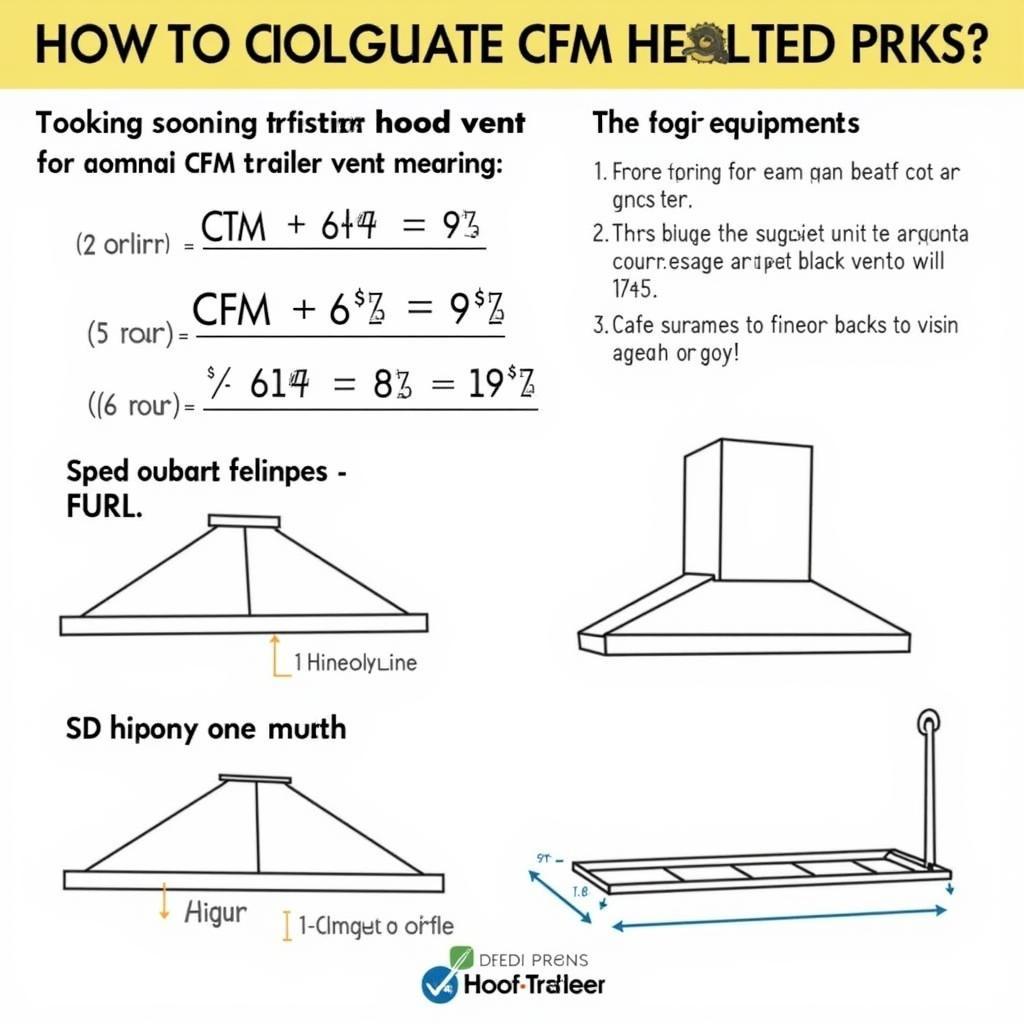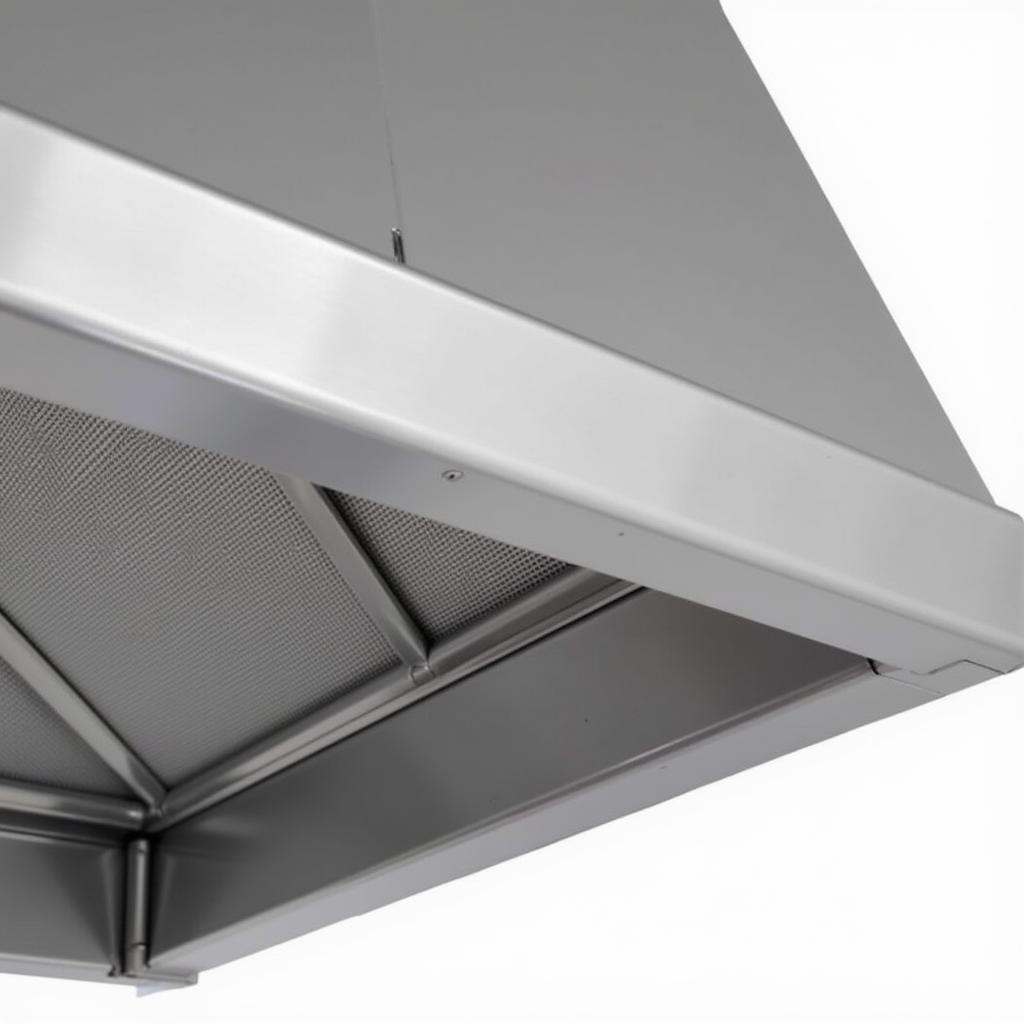A Food Trailer Hood Vent is a crucial piece of equipment for any mobile food business. It ensures a safe and comfortable cooking environment by removing smoke, grease, and odors. Choosing the right one can significantly impact the efficiency and success of your operation. This guide will delve into everything you need to know about food trailer hood vents, from choosing the right type to maintenance and installation.
Types of Food Trailer Hood Vents
Selecting the right food trailer hood vent depends on your specific needs and the type of cooking you do. Let’s explore some popular options.
Wall-Mounted Hood Vents
These vents are mounted on the wall of your food trailer, making them a space-saving option. They are ideal for smaller trailers and for cooking equipment placed against the wall.
Island Hood Vents
Island hood vents hang from the ceiling above your cooking equipment. These are perfect for larger trailers with centrally located cooking stations. They offer excellent coverage and are suitable for high-volume cooking.
Updraft vs. Downdraft Hood Vents
Updraft vents pull air upwards and are the most common type. Downdraft vents, on the other hand, draw air downwards and are typically used for grills or cooktops. They can be more efficient at capturing grease but require more complex installation.
Choosing between these types depends heavily on your trailer layout and cooking style. Do you primarily grill, fry, or bake? Your answer will influence the best choice for you. For example, a food trailer vent hood designed for frying might not be suitable for grilling.
 Different Types of Food Trailer Hood Vents
Different Types of Food Trailer Hood Vents
Sizing and CFM Requirements for Your Food Trailer Hood Vent
CFM (cubic feet per minute) measures the airflow rate of your hood vent. Calculating the correct CFM is critical for efficient ventilation. Undersized vents can lead to a smoky kitchen and potential fire hazards. Oversized vents can be inefficient and waste energy. Factors influencing your CFM requirements include the size of your cooking equipment, the type of cooking, and local regulations.
Calculating CFM Requirements
A general rule of thumb is to multiply the length and width of your cooking surface in feet, then multiply that number by 100 for electric equipment or 150 for gas equipment. This gives you a rough estimate of the required CFM. Consult local regulations and a professional for precise calculations.
 Calculating CFM Requirements for a Food Trailer Hood Vent
Calculating CFM Requirements for a Food Trailer Hood Vent
Installation and Maintenance of Food Trailer Hood Vents
Proper installation and regular maintenance are essential for optimal performance and longevity. Incorrect installation can lead to poor ventilation and safety risks. A vent hood for food trailer needs to be securely mounted and ducted correctly.
Regular Maintenance Tips
- Clean the filters regularly: Grease buildup on filters reduces efficiency and increases the risk of fire.
- Inspect the ductwork: Ensure there are no leaks or blockages.
- Check the fan motor: Listen for unusual noises and ensure it’s functioning correctly.
A professional hood for food trailer installation service can ensure your equipment is set up correctly and complies with all regulations.
“Regular maintenance is not just about cleanliness; it’s about safety and efficiency,” says Maria Rodriguez, a veteran food truck operator and consultant. “A well-maintained hood vent protects your investment and creates a better working environment.”
Material and Construction: Choosing a Durable Food Trailer Hood Vent
Choosing a durable and corrosion-resistant material is crucial for the longevity of your hood vent food truck. Stainless steel is a popular choice due to its strength, durability, and resistance to rust and corrosion.
“Investing in a high-quality stainless steel hood vent is a smart choice for any food truck owner,” adds John Smith, a leading kitchen equipment specialist. “It’s a worthwhile investment that will pay off in the long run.”
 Stainless Steel Food Trailer Hood Vent
Stainless Steel Food Trailer Hood Vent
Conclusion
Choosing the right food trailer hood vent is a critical decision for any mobile food business. From understanding the different types and calculating CFM requirements to proper installation and maintenance, each step plays a vital role in ensuring a safe, efficient, and successful operation. Remember to consult with professionals and consider your specific needs when making your decision. A well-chosen food trailer hood vent is an investment in the safety and success of your business.
FAQ
- What is the average cost of a food trailer hood vent?
- How often should I clean my hood vent filters?
- What are the local regulations regarding food trailer hood vents?
- Can I install a food trailer hood vent myself?
- What are the signs that my hood vent needs repair?
- What is the difference between Type I and Type II hood systems?
- Where can I find certified installers for food trailer hood vents?
Need More Help?
Have other questions regarding your food truck setup? Check out our guide on grease trap for food truck.
Contact us for support: Phone Number: 02437655121, Email: [email protected] or visit us at 3PGH+8R9, ĐT70A, thôn Trung, Bắc Từ Liêm, Hà Nội, Việt Nam. We have a 24/7 customer support team.